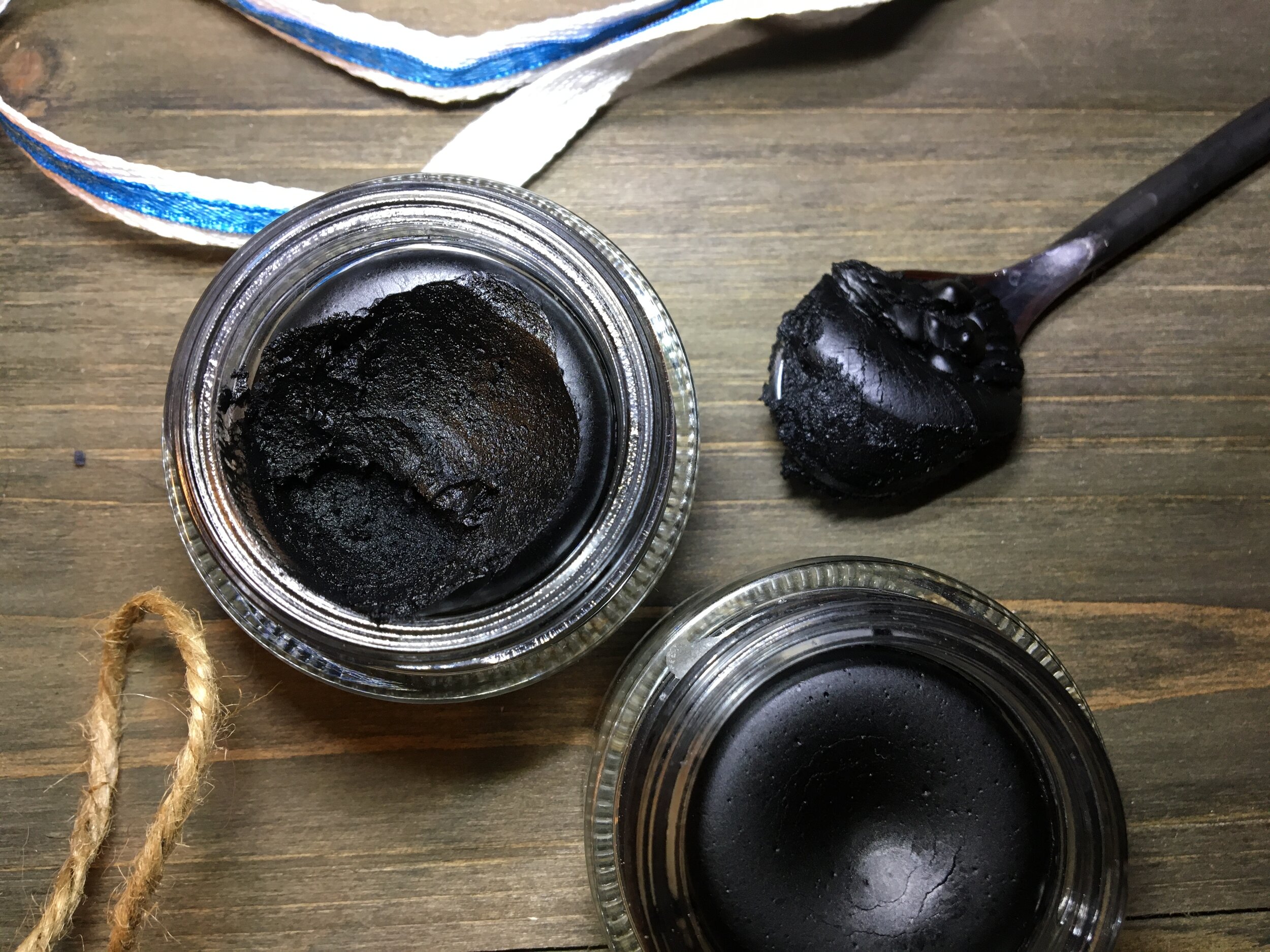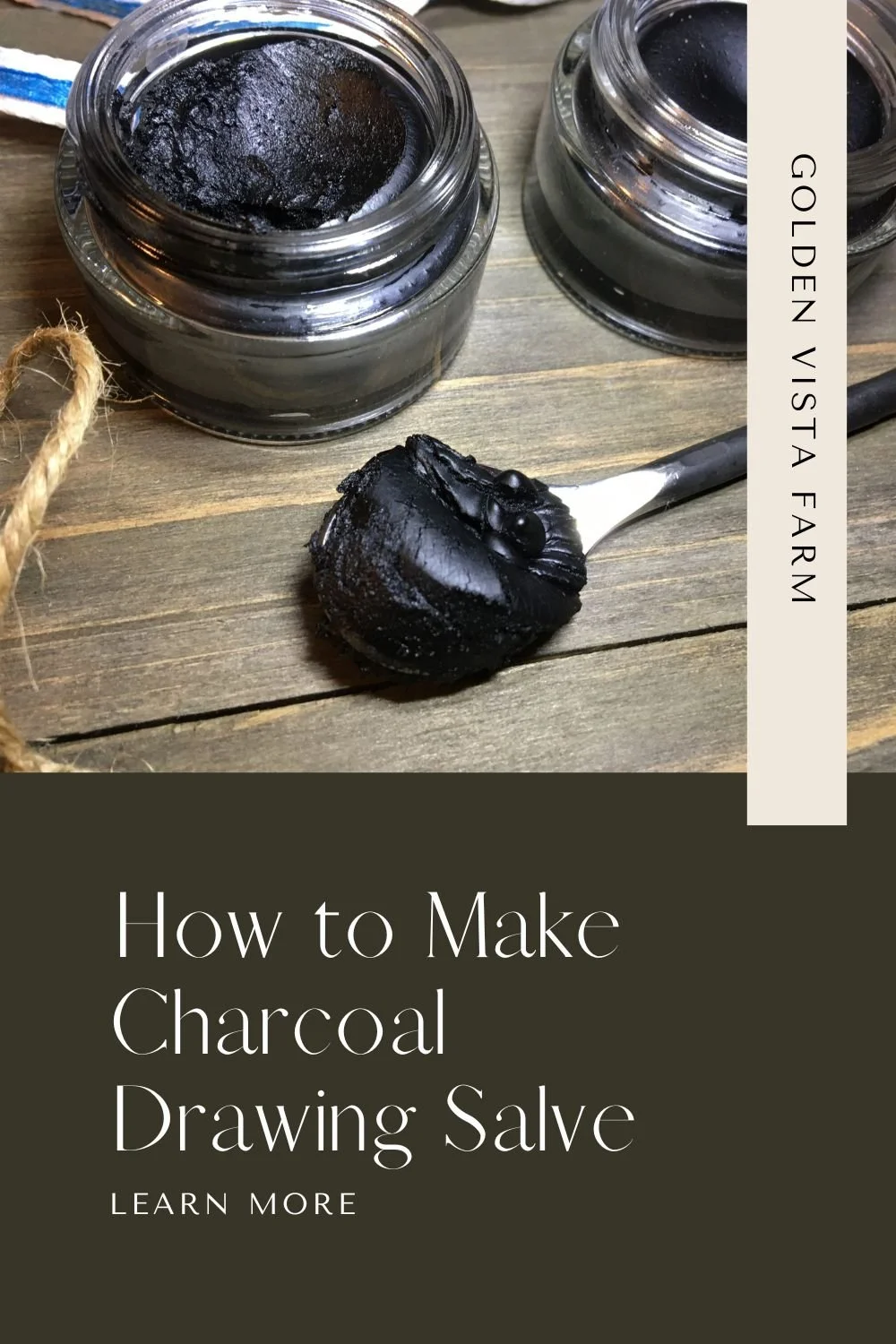How to Make Charcoal Drawing Salve
Generally when I think of a salve, I think of something that protects the skin, nourishes the skin, and holds moisture in. Well today we’re going to be doing things a little backwards. This charcoal drawing salve is an old remedy used to draw things OUT of the skin such as infections, splinters, bee stings, and bug bites.
Now a word of caution: this stuff is M.E.S.S.Y! Make sure to have soap and water nearby for your hands after applying. Wear old clothes, and cover the wound with a bandage if possible. Consider yourself duly warned. ;) Now, now, don’t let a little black sticky goo scare you off—it truly is amazing stuff that should be in your natural first aid kit!!
How to make charcoal drawing salve
Ingredients
60 grams calendula infused oil
15 grams castor oil
10 grams beeswax
7 grams activated charcoal powder
7 grams bentonite clay
1 gram vitamin e
15 drops lavender essential oil (optional)
10 drops tea tree essential oil (optional)
Directions
In a double boiler (learn more here) add the calendula infused oil, castor oil, and beeswax. Melt over low/medium heat until the beeswax has completely melted.
Remove from the heat and gently stir or whisk in the remaining ingredients. Stir until the salve is smooth.
Pour into glass jars and seal tight with a lid. Let them sit at room temperature until they have cooled and hardened.
Label and store for up to a year in a cool dry location. (The salve may last longer, but a year is a good guess.)
The nice thing about salves is they don’t need a preservative since there is no water in the formula. The vitamin e does help keep the oils from going rancid quite as quickly, but if you do notice the salve starting to smell yucky, it’s time to throw it out and make a new batch.
How to use Charcoal Drawing Salve
Apply the salve liberally to the infected area. If it is a splinter, you will want to leave it on overnight. Wrap it loosely with a cloth so it doesn’t get all over your sheets. Check the splinter in the morning, and if the area has softened enough to remove the splinter, great. If not, go ahead and add a fresh round of salve and let it continue to do its work. Depending how deep the splinter is it may take 2-3 applications.
If you are applying it to a boil or other skin inflammation, rub the salve on and again, leave it on for at least several hours to overnight. Wash the salve off in the morning and check the area. I highly recommend washing off in the shower with lots of soap!
Things to note
You can learn to make your own super potent calendula infused oil on this post here.
This salve is not intended to be applied to open cuts or wounds. Use common sense when applying, and as always discontinue use if your body seems sensitive to any of the ingredients.
Also—apparently there is another type of drawing salve out there called Black Drawing Salve that is made using zinc chloride and a plant called bloodroot. Supposedly it is an illegal salve used to treat cancerous skin cells. Clearly, the salve we are making here is not at all the same thing.
WHERE TO PURCHASE
I appreciate you taking the time to read my blog! By purchasing through one of my affiliate links you will not spend a penny more, but you are allowing me to receive a small commission. This allows me to keep posting great content for you. Thanks for your support! Read more here.
If you are unable to grow your own herbs, or find ingredients locally, then here are two of my favorite places to buy bulk ingredients:
My favorite eco friendly scrubbers for dishes, bathtubs, and cast iron pans, all come from this place. Purchase through my link and get a free gift set:
Please remember that I am not a medical doctor and none of the information I present should be misconstrued as medical advice. I cannot diagnose conditions or prescribe treatments for illnesses. If you have any questions whether or not herbs and essential oils are safe for you and your family, please speak with your medical professional. Essential oils and/or herbs are not intended to diagnose, treat, cure, or prevent disease. Instead, they are intended to support wellness and an overall healthy lifestyle. If you are pregnant or breastfeeding, or have any other health concerns, please consult your physician. These statements have not been evaluated by the Food and Drug Administration.



















